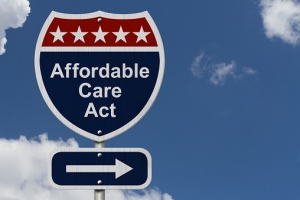Affordable Care Act
The Centers for Medicare & Medicaid Services (CMS) announced earlier this month that plans sold on the Health Insurance Marketplace (Marketplace) will receive quality ratings using a five-star system (with 5 stars representing the highest quality plan).
Senator Susan Collins (R-ME) submitted an inquiry to the Internal Revenue Service (IRS) earlier this year asking two very specific questions. She wanted to know if penalties related to the Employer Mandate could be reduced or waived if it would cause a hardship on an employer. She also wanted to know if the IRS would extend the transition relief that was previously available to employers with 50-99 employees. Previous transition relief exempted most employers of this size from the Employer Mandate during its first year of implementation in 2015.
The Internal Revenue Service recently released Revenue Procedure 2019-29 which included details on the affordability percentage related to the Employer Shared Responsibility provisions of the Affordable Care Act (ACA), also known as the Employer Mandate. In 2020, an applicable large employer (ALE) will be considered to offer affordable coverage to its full-time employees if the cost of coverage is 9.78% or less of the employee’s household income.
The Employer Mandate requires applicable large employers (ALEs), which are defined as employers with 50 or more full-time equivalent employees in the preceding year to offer health insurance to full-time employees. Generally, at least 95% of full-time employees must be offered health insurance.
Last December, a federal judge in Texas District Court ruled that the Affordable Care Act (ACA) was unconstitutional. The decision came in response to a lawsuit filed by 20 Republican state attorneys general. These attorneys general argued that the ACA was unconstitutional because there is no longer a penalty associated with the Individual Mandate, and the judge agreed.
Last year, the Trump administration issued new regulations relating to Association Health Plans (AHPs). The primary intent of the regulations was to allow small employers to more easily band together to purchase health insurance coverage. The regulations not only allowed for AHPs to be established by employers in the same industry, but the regulations also allowed AHPs to be established by employers in a similar geographic location (e.g. city, state, metropolitan area).
The Internal Revenue Service (IRS) is continuing to send Letter 226J to employers for which the agency believes an Employer Mandate penalty is due. Currently, these notices are being sent to employers for penalties that apply to the 2016 calendar year.
Last year, the Department of Labor (DOL) issued new regulations pertaining to Association Health Plans (AHPs). The rules relaxed previously issued regulations by allowing AHPs to be established for employers who are in the same industry or geographic location. AHPs are regulated like large group health plans which are exempt from some of the Affordable Care Act (ACA) market reforms, including the requirement to cover essential health benefits.
There’s never a dull moment when it comes to the Affordable Care Act (ACA). Some people love the law, some people hate it, and others find themselves somewhere in between. However, there’s one thing that’s for certain. The rules are constantly being challenged or changed. Here are three key developments that occurred last week.










